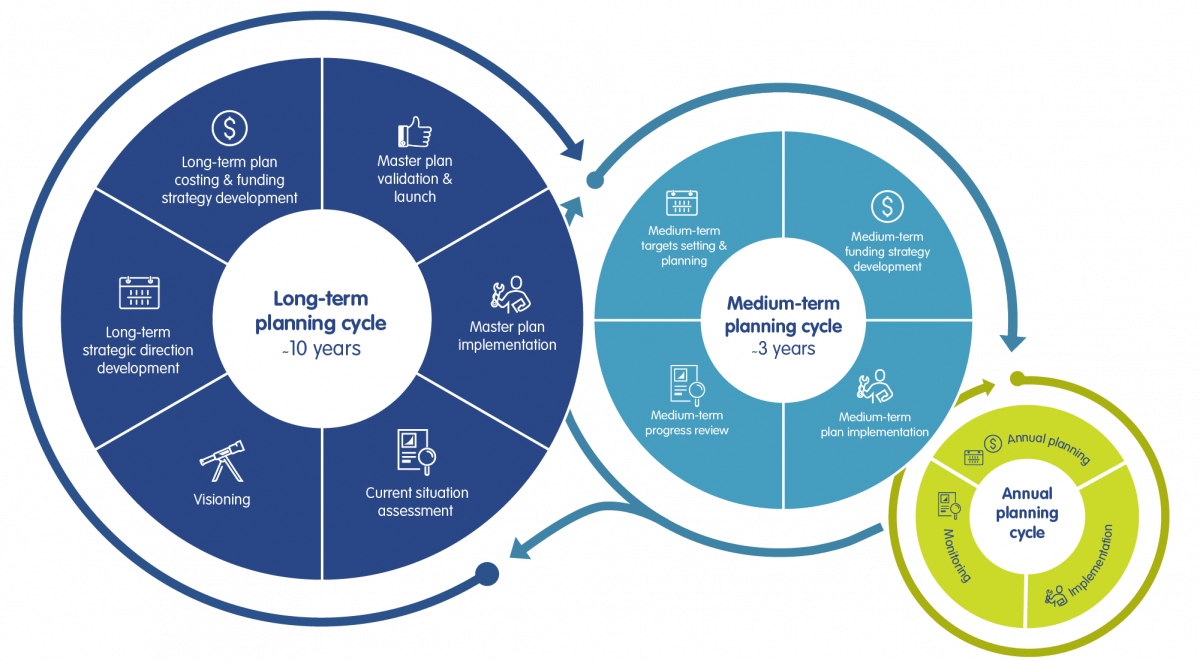
The development and implementation of a district WASH master plan starts commonly with an assessment of the current situation.
In the concept of a long term strategic (district WASH master) plan, the situational analysis may be preceded by an introduction of the why and how of district WASH master planning, and by institutional strengthening.
Institutional strengthening is about securing a foundation for the development and implementation of the district WASH master plan as a government-led progress. In some cases, the capacity of relevant institutions (e.g. local government, as the service authority, and its partners) needs to be strengthened to lead the process, and involve all the stakeholders in the subsequent steps of assessment, planning, implementation and monitoring.
The development of a district WASH master plan consists of the steps, as shown in the figure below:

The development of the district WASH master plan is followed by its implementation. This entails the harmonised, collaborative effort involving government, NGOs, civil society and the private sector.
Implementation of the master plan takes place through a number of three-to five-year medium-term planning cycles, which each consist of annual planning cycles. Ideally, these medium term and annual cycles align with planning cycles and set by national government.
These medium and annual cycles include target setting (going towards the long-term vision), planning and implementation.
Monitoring is a crucial part of the implementation of the master plan and its medium-term and annual plans. The successful implementation of a plan includes regular reviews, increased learning-, and using mechanisms for monitoring and accountability.
Who does what will depend on the situation and context of the district. In rural districts, with multiple service delivery models, it is key that local government has ownership and is in the driver's seat. In urban districts (municipalities or metropolitan areas), where WASH services are mainly provided by a utility, the utility may have to play a big role in providing leadership for the development of the master plan, possibly in close collaboration with local government.
In addition, involvement of a wide range of stakeholders involved in the provision of water services, is key. This includes development partners - interested in being - active in the district, NGOs, philanthropists (including diaspora, where relevant), civil society, traditional leaders, (and representatives from) service providers, including schools and health care facilities.
Outside facilitation and technical support, from NGOs, private sector (consultants) and/or national or regional government, may be required to:
The development of a district WASH master plan, from the situational analysis to the launching of the plan, typically takes 6 to 12 months. The duration depends on the availability of data and information and on the available capacity of district stakeholders to undertake the data collection, assessments and planning exercises.